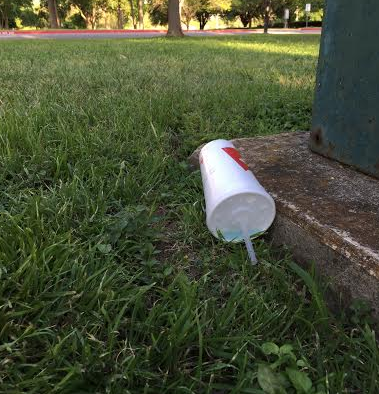Littering: An Environmental Issue
Share

Photo by: Sherlyn Ong
By: Sherlyn Ong
It is a wide-known fact that littering is terrible because it makes places look dirty and unappealing, however it is also important to note that it has a negative environmental impact as well.
Firstly, litter can be anything; it includes: cans, coffee cups, fountain drink cups, bottles, wrappers, cigarette butts and many other objects. When any of these items are discarded inappropriately, it is considered litter.
Litter that is thrown on the floor will pose as a threat to animals that mistake them for homes or food. Many animals end up getting entangled in trash which can pose as a health issue to the animal and potentially end its life. Since litter can also carry many germs, animals that consume or come into contact with it become carriers of diseases that make people sick. (In other words, littering will come back to bite us.)
Litter will also eventually get washed into storm drains that lead to rivers and oceans. This results in litter on land posing as a problem in water bodies as well. If the water bodies are polluted, the water can no longer be used for recreation or for drinking. The aquatic animals in it also could mistakenly entangle themselves in the litter or consume them. They could end up unhealthy and die due to dirty water.
The simple solution to this problem is to throw trash into the designated bins or recycle if possible, as that will be preferable. Even if there is not a nearby trashcan, you should definitely hold onto your trash until you see one, rather than discard it on the floor. This would protect the animals, protect our water and create a more pleasant environment for the whole community. Furthermore, if you could have recycled your trash and did not do so, you would have wasted an opportunity to help the environment. Play your part by not littering and stopping others from littering.
